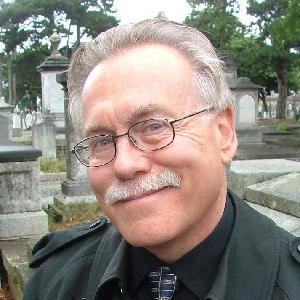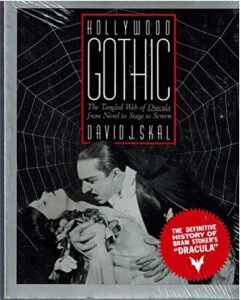
A Tribute to David J. Skal
It was with great sadness that I read of David J. Skal’s passing. I had a fan girl admiration of the fan boy who became a knowledgeable and esteemed author of non-fiction books that examined horror through a historical and cultural lens. To honor his memory, I dug out my copy Hollywood Gothic: The Tangled Web of “Dracula” from Novel to Stage and Screen. As soon as I opened the book, I felt my eyes well up with tears. Before even getting into the introduction, Skal had set a tone with a quote that was guaranteed to go straight to a genre lover’s heart:
“Don’t have any picture shows here, except Jesus ones in the courthouse sometimes,” said Jem. “Ever seen anything good?” Dill had seen Dracula, a revelation that moved Jem to eye him with the beginning of respect. “Tell it to us,” he said.
Harper Lee, To Kill a Mockingbird
Skal exemplified a veneration for the genre. He did so with insight and humor, as exhibited in his contrasting of a British staging of Dracula with an American version starring Bela Lugosi: “The London Dracula was middle-aged and malignant; Lugosi presented quite a different picture: sexy, continental, with slicked-back patent-leather hair and a weird green cast to his makeup—a Latin lover from beyond the grave, Valentino gone slightly rancid.”

Another display of Skal’s sly wit is evident in the alliterative introduction entitled “Castles, Cobwebs and Candelabra,” where he distills for the reader what to expect from the ensuing text: “In which the reader draws nearer to a modern myth, shuddering in delicious anticipation, and discovers the Count to be a closer relation than previously imagined, not reflected in mirrors, but lurking in them all the same.” This thread of distillation continues through each of the book’s chapters. One of my favorites concerns the sanctioned screen adaptation of Dracula: “In which the Laemmles build a castle, but have no tenant, and in which the cinematic rites are finally administered, but the director is odd, and requires armadillos, and the thing costs too much, but needs to be finished.” A fitting and funny summation of what Chapter Five has to offer.
In the journey that takes the reader from the Victorian Age to the late 20th century, Skal delivers tidbits that help define the times. For example, he includes an anecdote from Vincent Price who had met Bram Stoker’s wife in 1933 while Price was an art student at an elite school in London. The beloved actor recalled having tea with Florence Stoker at her house and noted “All her books were signed by the great literati of her lifetime. She was very petite and almost blind, very dear and still very beautiful. I felt I’d stepped into a most romantic past.” And such a reminiscence makes the reader feel much the same.
There’s also a hilarious recollection from theatre icon Elaine Stritch, who was in a stage production of Dracula with Bela Lugosi in 1947. It’s hard to imagine Stritch as most of us think of her, a tough-talking broad with a gravelly voice, playing the role of Lucy. But what seems equally preposterous is the casting of Ray Walston as Renfield. One can only think this production was destined to be regarded as a comedy, and that inadvertently came to pass. Stritch related that the actor (unnamed in the text) who played Jonathan Harker had to say the line “Let me drive it in deep!” prior to staking the Count. It’s easy to see why that piece of dialogue would send someone into a fit of giggles, which indeed happened to the actor during rehearsals. Despite the concern that it would happen again during the first performance, the line was uttered with seriousness. The problem that did transpire had to do with the enactment of the staking: the actor playing Harker placed the stake over the Dracula dummy and when he swung down the mallet missed his mark. With the rubber hammer bouncing off the dummy and Lugosi doing an offstage yell on cue, “the audience and company just froze in silence.” Then the actor (again not named in the text) who played Van Helsing adlibbed “Hit him again, Harker!” which understandably sent the audience into a frenzy of unfettered laughter, “stopping the show for a full two minutes.”
Re-reading Hollywood Gothic made me nostalgic. It felt rather like opening a time capsule and pulling out paraphernalia that was informative and sentimental. The author’s painstaking research plus the inclusion of fascinating photographs that accompany his words render the book a gem. Reading it again also reawakened my appreciation of David J. Skal’s contribution to the horror genre. While Count Dracula famously remarked, “I never drink…wine,” I now raise a glass in a toast to Mr. Skal.

